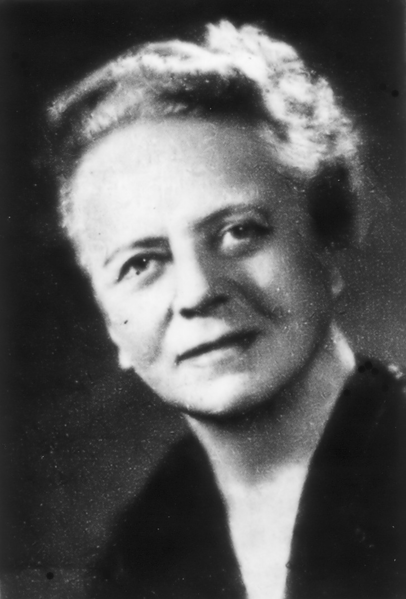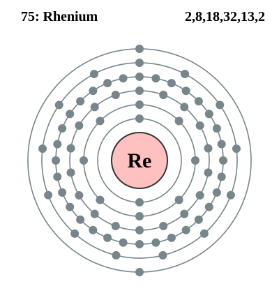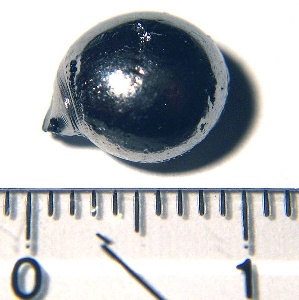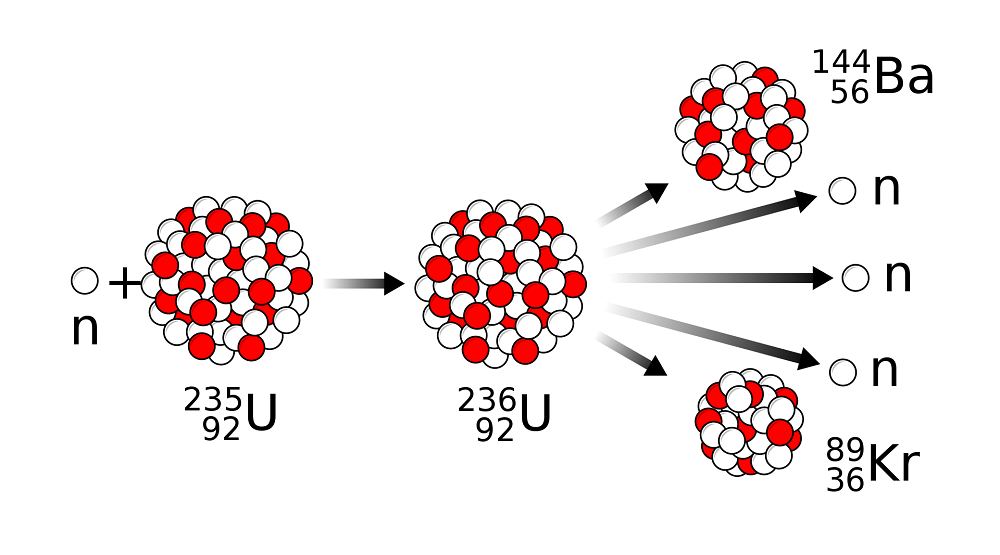
Chemist Ida Noddack was the first person to theorize the possibility of nuclear fission; a concept that, up until recently, she did not receive credit for. Noddack is also known for her collaborative discovery of the element rhenium.
Studying Chemistry at a Revolutionary Time
Ida Noddack (née Tacke) was born in the Rhine region of Germany on February 25, 1896. From a young age, she had a strong interest in chemistry and decided to pursue it as her career. In 1915, just six years after women were officially allowed to study at the university level in Berlin, Noddack attended the Technical University of Berlin. She was one of the first female students in Germany and, within that group, one of the first women to study chemistry.

Ida Noddack. Image licensed under CC BY-SA 3.0, via Wikimedia Commons.
In 1921, Noddack earned a doctorate from the Technical University of Berlin and began a career in the chemical industry at the Physico-Technical Research Agency in Berlin. There, she worked with chemists Otto Carl Berg and Walter Noddack, the latter of whom she married in 1926.
Noddack’s position at the research agency was unpaid, which was normal at the time for women in her field. Throughout her career, she would often sign on as an unpaid research assistant where her husband worked so that they could conduct research together. Although lacking in both compensation and credit for her work, Noddack made many significant contributions to the field of chemistry. Today, she is known for two standout accomplishments: the discovery of rhenium and the first proposal of the possibility of nuclear fission.
Ida Noddack: Element Hunter
When Dmitri Mendeleev developed a way to organize chemical elements in 1869, he left spaces in the table for yet-to-be-discovered elements. This inspired many scientists to become “element hunters”, seeking out the discovery of unknown elements to complete the patterns set forth in the periodic table.
In 1925, the Noddacks and Berg attempted to find elements 43 and 75. The three scientists theorized that element 75 was present in the ores of metals. They used X-rays to examine a range of ores and finally found the new element in platinum ores within a mineral called columbite. The element is so rare that to produce just 1 gram, the team had to process 600 kilograms of ore. They named the element rhenium after the Rhine river near Noddack’s birthplace.


Left: The electron shell diagram of rhenium. Image by Greg Robson — Own work. Licensed under CC BY-SA 2.0 UK, via Wikimedia Commons. Right: A rhenium pellet. Image by Alchemist-hp. Licensed under CC BY-SA 3.0 DE, via Wikimedia Commons.
Rhenium’s largest applications (70% of the world’s production) are as alloys for jet engine parts, due to its ability to withstand high temperatures, and in platinum–rhenium catalysts in the petrochemical industry. Due to its water resistance, rhenium is also used in magnets for marine engines, and it is used in the production of an alloy found in oven filaments and X-ray machines.
An Early Prediction of Nuclear Fission
In 1934, Ida Noddack wrote an article for the Journal of Applied Chemistry, “On Element 93”, pointing out errors in the work of physicist Enrico Fermi. Specifically, she argued that he incorrectly interpreted the results of an experiment in which he bombarded the nuclei of uranium atoms with neutrons. Fermi claimed that he was producing something entirely new: transuranium elements. Noddack saw it differently: She theorized that the uranium nuclei were splitting, undergoing a “fission process”.
Fermi rejected Noddack’s theory and ignored her paper. Little did he know, she had predicted what would soon be known as nuclear fission.

An illustration of the nuclear fission process, in which a uranium nucleus breaks into barium and krypton. Image by MikeRun — Own work. Licensed under CC BY-SA 4.0, via Wikimedia Commons.
Five years later, German chemists Otto Hahn and Fritz Strassmann successfully demonstrated nuclear fission. Noddack claimed that she had postulated nuclear fission prior to their work, but Hahn and Strassmann ignored her. (Hahn later received the Nobel Prize for the discovery of nuclear fission.)
Well-Deserved Recognition
In 1931, Ida Noddack and her husband were awarded the Liebig Medal, and in 1934, they both received the Scheele Award from the Swedish Chemical Society. Noddack was also awarded an honorary doctorate from the University of Hamburg in 1966.
In 1983, Glen T. Seaborg included Ida Noddack in his book of “landmark” scientific publications on uranium and fission, Transuranium Elements: Products of Modern Alchemy. He cited “On Element 93” and recognized Noddack as the first person to acknowledge the possibility of nuclear fission.
Today, Noddack is recognized not only for her contributions to our understanding of nuclear fission but also to the field of STEM overall.
Let’s wish Ida Noddack a happy birthday!
Further Reading
- Continue to celebrate the International Year of the Periodic Table by reading about other element hunters:
- Read more about Ida Noddack from these publications:




Comments (1)
Jason Taylor
March 15, 2024Thank you for this post. I wanted to cut and paste something I saw online that gives a little more evidence towards her being the discoverer or at least a co-discoverer of fission: “She was critical of his conclusions, saying
that all elements in the Periodic System would have to be eliminated before one could claim
to have found a trans-uranium element. She went further and suggested that: “When heavy
nuclei are bombarded by neutrons, it would be reasonable to conceive that they break down
into numerous large fragments which are isotopes of known elements but are not neighbors
of the bombarded elements”3. In this statement, Ida Noddack conceived, before anybody
else, the idea of nuclear fission. Her argument was as follows: when atoms are bombarded
by protons or alpha particles, the nuclear reactions that take place involve the emission of an
electron, a proton, or a helium nucleus and the mass of the bombarded atom suffers little
change. When, however, neutrons are used, new types of nuclear reaction should take place
that are completely different from those previously known.”